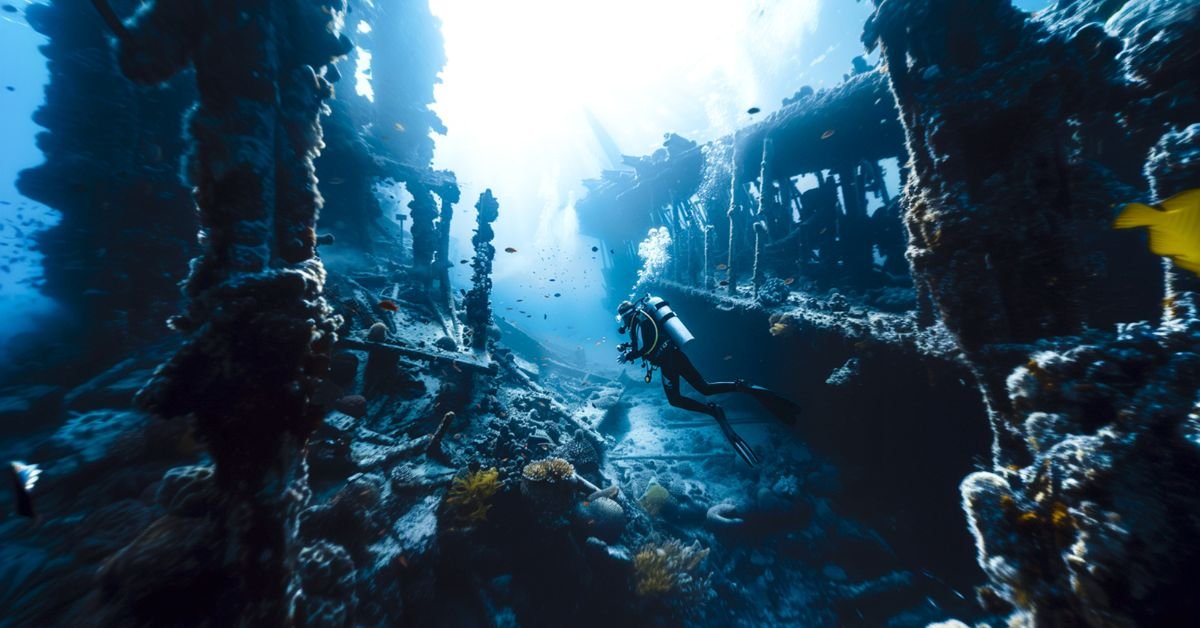Average depth of the ocean is about 3,688 meters (12,100 feet). But that’s just the average. Some parts are much shallower, while others plunge into the abyss.
The deepest known point is the Challenger Deep in the Mariana Trench, which reaches nearly 11,000 meters (36,000 feet) below sea level. To put that in perspective, if you dropped Mount Everest into the trench, its peak would still be more than a mile underwater!
Ocean Floor Diagram: Mapping the Unknown
If you could peel back the water and look at an ocean floor diagram, you’d see a landscape as varied as any on land. There are towering underwater mountains called seamounts, vast plains known as abyssal plains, deep trenches, and even underwater volcanoes.
Here’s a quick breakdown of what you’d find on a typical ocean floor diagram:
- Continental Shelf: The gently sloping area near the coast.
- Continental Slope: Where the seafloor drops steeply.
- Abyssal Plain: Flat, deep areas covering much of the ocean floor.
- Mid-Ocean Ridge: Underwater mountain ranges formed by tectonic activity.
- Trenches: Deep, narrow valleys like the Mariana Trench.
- Seamounts and Guyots: Isolated underwater mountains, some of which are extinct volcanoes.
Life Underneath the Ocean: A World of Wonders
The Sunlit Zone: Where Most Life Thrives
The upper layer of the ocean, called the epipelagic or “sunlit” zone, extends down to about 200 meters. Here, sunlight supports photosynthesis, and you’ll find most of the ocean’s familiar life—fish, dolphins, whales, and coral reefs.
The Twilight Zone: Mysterious and Dim
Below the sunlit zone is the mesopelagic or “twilight” zone, where light fades and temperatures drop. Strange creatures like lanternfish and giant squid thrive here, using bioluminescence to communicate and hunt.
The Midnight Zone: Eternal Darkness
Go deeper, and you’ll reach the bathypelagic or “midnight” zone. It’s pitch black, freezing cold, and the pressure is crushing. Yet, life persists—think anglerfish, gulper eels, and bizarre invertebrates that look like they belong in a sci-fi movie.
The Abyss and Trenches: The Final Frontier
At the very bottom, in the abyssal and hadal zones, life is sparse but resilient. Microbes feed on chemicals from hydrothermal vents, and a few hardy animals eke out an existence in the most extreme conditions on Earth.

Real-Life Example: Exploring the Deep
In 2023, a team of scientists sent a remotely operated vehicle (ROV) to explore a previously unmapped trench in the Pacific. They discovered dozens of new species, including a jellyfish that glows bright blue and a shrimp with transparent skin. One researcher said, “Every dive underneath the ocean is like visiting an alien planet. You never know what you’ll find.”
The Ocean’s Role in Earth’s Climate
The ocean isn’t just a vast expanse of water—it’s the planet’s life support system. It absorbs carbon dioxide, regulates temperature, and produces more than half the oxygen we breathe. The currents underneath the ocean move heat around the globe, shaping weather patterns and supporting life on land.
But the ocean is also vulnerable. Climate change, pollution, and overfishing threaten its delicate balance. Understanding what lies beneath the waves is crucial for protecting our planet’s future.
The Search for a New Ocean: What Lies Ahead?
As tectonic plates continue to shift, scientists predict that new oceans will form and old ones will close. The Atlantic Ocean, for example, is slowly widening, while the Pacific is shrinking. These changes happen over millions of years, but they remind us that Earth is always evolving.
The Technology Behind Ocean Exploration
Sonar and Submersibles
Mapping the ocean floor used to be guesswork. Today, scientists use sonar to create detailed ocean floor diagrams, revealing features we never knew existed. Submersibles—both manned and unmanned—allow us to explore the deepest parts of the ocean firsthand.
Satellites and Drones
Satellites can measure sea surface height and temperature, while underwater drones collect data from places humans can’t reach. These tools are revolutionizing our understanding of what’s underneath the ocean.
The Mysteries Still Waiting to Be Solved
Despite all our progress, more than 80% of the ocean remains unexplored. There could be entire ecosystems, ancient shipwrecks, or even new forms of life waiting to be discovered. The ocean is a frontier that challenges our curiosity and our technology.
Risks and Rewards: The Challenges of Exploring Underneath the Ocean
The Dangers
Exploring the deep sea isn’t easy. The pressure can crush submarines, temperatures can freeze equipment, and darkness makes navigation tricky. There’s also the risk of disturbing fragile ecosystems.
The Rewards
But the rewards are immense. Every discovery underneath the ocean adds to our knowledge of Earth’s history, biology, and even the origins of life itself. Some deep-sea organisms have led to breakthroughs in medicine and technology.
The Ocean in Popular Culture
From movies like “Finding Nemo” to documentaries like “Blue Planet,” the mysteries underneath the ocean have inspired countless stories. Even video games and virtual reality experiences now let us explore the deep from our living rooms.
The Future: Protecting What Lies Beneath
As we learn more about the ocean, the need to protect it becomes clear. Marine reserves, sustainable fishing, and pollution control are all vital. The more we understand about what’s underneath the ocean, the better equipped we are to safeguard it for future generations.
FAQs
Q. How much of our earth is covered in water?
A. About 71% of Earth’s surface is covered in water, with the vast majority found in the world’s oceans.
Q. What is the average depth of the ocean?
A. The average depth of the ocean is approximately 3,688 meters (12,100 feet), but some areas are much deeper, like the Mariana Trench.
Q. What does an ocean floor diagram show?
A. An ocean floor diagram illustrates the features beneath the ocean, including continental shelves, slopes, abyssal plains, mid-ocean ridges, trenches, and seamounts.
Q. What is a new ocean, and how does it form?
A. new ocean forms when tectonic plates move apart, creating space for water to fill in. The Red Sea is an example of a region that may eventually become a new ocean.
Final Thoughts
Underneath the ocean is a place of wonder, mystery, and endless discovery. From the sunlit shallows to the pitch-black trenches, it’s a realm that challenges our imagination and our science. As we continue to explore, protect, and learn from the ocean, we’re reminded of how much there is still to discover.
CLICK HERE FOR MORE BLOG POSTS
There’s a certain weight in the words John Authers writes—not just because of what he knows, but how he shares it. His voice doesn’t just echo facts; it builds meaning. In a world overwhelmed by rushed opinions and robotic summaries, John’s writing feels… different. It feels lived-in, thoughtful, and deeply human.
Readers don’t turn to John for headlines—they come for context. They come for that rare blend of clarity, insight, and emotional depth that turns financial journalism into something closer to storytelling. His reflections on markets, geopolitics, or human behavior aren’t just readable—they’re relatable.
What sets John apart isn’t just his experience (though he has plenty of it). It’s his ability to pause, reflect, and explain the why behind the what. He writes like someone who’s been in the room where it happens—but never forgets the reader who hasn’t.
In 2025, when AI churns out articles in milliseconds, John Authers still writes like a human—and that, more than anything, is what makes his work worth reading.











